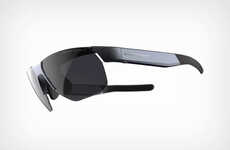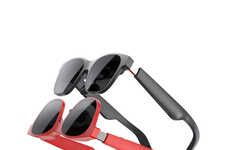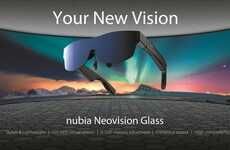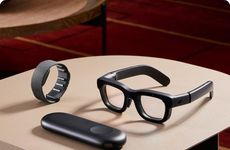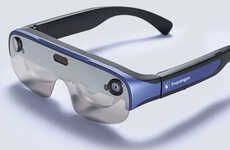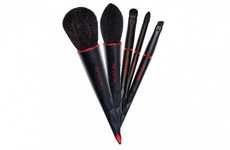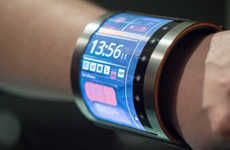
The Latest Epson Moverio Glasses Feature Transparent Lenses
Rahul Kalvapalle — February 23, 2016 — Tech
Augmented reality glasses are one of those next-generation technology inventions that sound great but are difficult to get comfortable with because of just how different they are. This situation calls for constant improvement, upgrades and evolution of products, and few companies embody this necessity like Epson, which has already launched the third version of its Epson Moverio augmented reality glasses.
Launched at the Mobile World Congress in Barcelona, these augmented reality glasses feature transparent lenses embedded with OLED displays, a quad-core processor and the Android 5.1 operating system. Furthermore, these augmented reality glasses weigh far less than their predecessors the BT-200s, making these officially the world's lightest augmented reality glasses.
Available for preorder, the Epson Moverio BT-300 glasses are raising the stakes in the augmented reality glasses game.
Launched at the Mobile World Congress in Barcelona, these augmented reality glasses feature transparent lenses embedded with OLED displays, a quad-core processor and the Android 5.1 operating system. Furthermore, these augmented reality glasses weigh far less than their predecessors the BT-200s, making these officially the world's lightest augmented reality glasses.
Available for preorder, the Epson Moverio BT-300 glasses are raising the stakes in the augmented reality glasses game.
Trend Themes
1. Transparent Lenses - Exploring the development of transparent lenses in augmented reality glasses presents an opportunity for disruptive innovation in the field of vision-based technologies.
2. Quad-core Processor - The integration of a quad-core processor in augmented reality glasses opens up possibilities for disruptive innovation in areas such as real-time data processing and multi-tasking capabilities within the wearable tech industry.
3. Lightweight Design - The development of lightweight augmented reality glasses provides an opportunity for disruptive innovation in terms of user comfort and extended usage, with potential applications in industries such as healthcare and industrial training.
Industry Implications
1. Wearable Tech - The advancements in augmented reality glasses, including transparent lenses and lightweight design, pave the way for disruptive innovation within the wearable tech industry, creating opportunities for enhanced user experiences and expanded functionalities.
2. Vision-based Technologies - The integration of transparent lenses in augmented reality glasses presents disruptive innovation opportunities in the field of vision-based technologies, offering new possibilities for immersive experiences, augmented vision, and enhanced visual data processing.
3. Healthcare - The lightweight design and advanced features of augmented reality glasses make them suitable for disruptive innovation in healthcare, enabling applications such as surgical training, telemedicine, and augmented reality-assisted procedures.
5.2
Score
Popularity
Activity
Freshness





